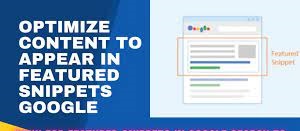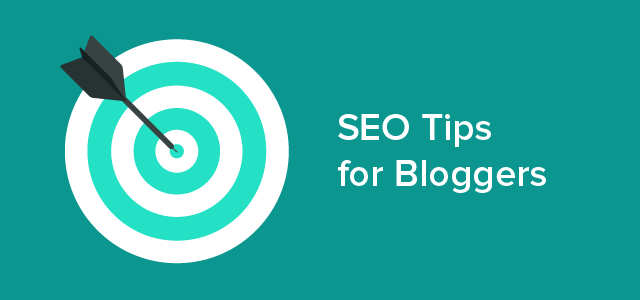Best and efficient SEO tips for beginners will be described in this article. When you first start learning SEO, it can seem like there is a lot to understand, especially since Google’s algorithm employs more than 200 ranking elements to determine how to rank content. However, concentrating on the fundamentals of SEO can assist you in creating a solid basis that will enable you to evolve an SEO specialist.
With the help of these 15 SEO tips for beginners, begin to grasp the foundations of SEO. Download our free SEO guide to learn more about how to start using SEO if you’re interested. Or, to become an SEO expert, visit our comprehensive resource centre!
Top 15 SEO Tips for Beginners That Will Get Your Site Ranking In 2022
Top 15 SEO Tips for Beginners That Will Get Your Site Ranking are explained here.
1. Claim (and Complete) your google Business Profile

Start with Google Business Profile before you do any keyword research or write any title tags. Search “my business” with “sushi restaurant”
A free public profile or listing called a Google Business Profile can be found in pertinent Google search results. You’ve probably come across Google Business Profiles while looking up information on a company, discovering a restaurant, or getting driving instructions. This is another seo tips for beginners. Also check remote desktop software
By claiming (or creating) your Google Business Profile listing, you can instantly give Google and users information about your business. Make claiming your account one of your initial SEO tasks because it’s quick and simple to perform.
Once you have control over your profile, make it more effective by including the following details:
Name, address, and contact information (NAP)
Operating periods
appropriate categories, such as “Restaurant”
Briefly describe your company’s activities and what makes it special.
You can also include forthcoming events in your Google Business Profile.
Keep an active presence on Google Business Profile for the greatest results. Respond to customer feedback, provide updates about services and company events, allow text messaging, modify business hours for holidays, and more.
2. Target Long-tail Keywords Vs. Short-tail keywords
Search engine optimization depends heavily on keywords.
You must select pertinent keywords, ascertain the search intent of users using those keywords, and include them in your meta tags and content if you want people to find your website (and if you want your range to rank in search results).
It’s important to know the distinction between long-tail and short-tail before conducting keyword research:
Three to four words are considered long-tail keywords, such as “how to roll sushi.”
Short-tail keywords: These are single or double words, such as “sushi rolls.”
When beginning an SEO campaign for a website, you should concentrate your keyword research on long-tail keywords. Because a long-tail keyword has less competition than a short-tail keyword, ranking your content for it is simpler.
The distinction between long-tail and short-tail keywords
This is one approach to compare short- and long-tail searches:
Long-tail keywords are comparable to high school athletes, whilst short-tail keywords are comparable to Olympic athletes. You will find it difficult to rank at the top of search results if you haven’t trained or constructed your site to an Olympic standard. But you have a great place to start at the high school level.
3. Understand the 3 different search intents
You also ought to take into account the three user intents in addition to long-tail and short-tail searches:
Navigation: Someone wants to access a particular website, such as Apple or Facebook.
Informational: Someone seeks knowledge about a subject, such as how to roll sushi.
Transactional: A customer wishes to purchase a given item, such as a sushi roller.
Understanding these intents is crucial since they will affect the keywords you choose to target.
For instance, a blog post should target an informational keyword whereas a service or product page should target a transactional term. Prior to crafting your content and optimising your pages, search potential keywords on Google. The results will show you the search intent.
4. Research relevant keywords with the right tools

Once you’ve determined which keywords to concentrate on, you can start doing their research using tools like:
- Price Eleven
- Cost
- Autocomplete on Google
- Free
- KeywordTool
- $89-$199 / mo.
- Google Keyword Tool
- Free
- KeywordsFX
- Free
- AnswerThePublic
- $0-$99 / mo.
As a novice in SEO, you have a variety of free options at your disposal; try them all out & see which one you want most. As your SEO efforts grow, you can consider using a paid tool like KeywordTool. You can even choose to spend money on an SEO toolset like Ahrefs, which provides tools for backlink analysis, keyword research, and more.
5. Choose core (and related)key words for every page
When you start optimising your website, you’ll start by looking up the page’s primary keywords.
For instance, if you have a page with information about rolling sushi, you may use the phrase “how to roll sushi” as your main keyword due to its popularity. You should also gather two to three similar keywords in addition to your main keyword.
Using your keyword research tools, you can locate these keywords.
For instance, if you use Google as your keyword research tool, you can look at the “Searches relevant to [keyword]” section of the search engine’s search results page to uncover related keywords. Alternately, you can utilise the autocomplete function to find other keywords. Also check search tools for windows
An illustration of how searches connected to
The following information can be obtained by entering certain keywords into Google Keyword Planner:
- Search activity
- Competition
- Bids
- Google Keyword Planner sushi search preview
You may start optimising your content once you have a list of pertinent keywords. Create a Google Sheet and list your pages along with their primary and related keywords for the best results. Then, you and your team can use this sheet as a useful resource.
6. Optimize your title tags –and makethem spicy
Your title tag creates a first (and lasting) impression, just like when you meet someone new. Because the first impression also influences whether someone clicks on your page or another’s, informative, optimised, and enticing headlines are essential.
What does an enlightening, optimised, and savoury title mean? A good query.
Informative: Without using click-bait language, your title concisely conveys the contents of your page.
Optimized: Your title contains at most 55 characters and includes your primary keyword.
Spicy: Your page’s title piques readers’ interest in the information on it.
You can alter the on-page title of your content (using the H1 element) if you like. For instance, you might write “How to Make Your Own Sushi Rolls (Infographic) | Allrecipes” as the title tag and “How to Make Sushi” as the H1 instead.
How to Make Sushi
But make sure your title tag and H1 are in harmony with one another.
Users will return to the search results if they click on your site but then land on a page with a title that doesn’t seem to match your title tag. That behaviour suggests to Google that your content isn’t pertinent to the user, which may result in lower ranks. This is another seo tips for beginners.
Use the following help to support you write your first set of title tags:
Analyzer for CoSchedule Headlines
List of Power Words for Sumo
Title Tag Length Checker for Moz
Make a list of potential titles to try because, as you know, you can always edit your title tag later.
7. Create Informative and optimized meta descritptions
If you’ve read any SEO beginner tutorials, you’ve definitely heard about meta descriptions, which are listed in search results below title tags but don’t affect rankings like title tags do.
This does not imply that your SEO plan should not include meta descriptions.
A meta description illustration
Because of users, you should include your keywords in your meta descriptions, as well as any relevant terms. Google will bold a keyword if it is used in your meta description and someone searches for it. Users may click if they feel that your page is more relevant as a result.
A sample of a bolded meta description search
It’s crucial to understand that Google frequently changes your meta description.
A case study of Google changing a meta description
Google may decide to rewrite your content’s meta description even if it summarises your content and adheres to the meta description length constraints (which are 150 characters).
That’s okay; it takes place.
However, if Google does use your meta description, it will contain your primary keywords as well as perhaps some associated ones. By making those keywords bold, you may encourage users to visit your website, which will tell Google that your material is relevant to their search.
8. Use Keywords in headings and paragraphs
Another essential piece of SEO advice for beginners? Add keywords to the headings and body of your writing.
Although Google would prefer not to use keywords, they are an essential part of its ranking system. When deciding whether a piece of knowledge is relevant to a certain topic or query, Google uses keywords. Because of this, your content should employ your keywords in addition to the title tags and meta descriptions.
illustration of a h1 utilising keywords
Your primary and associated keywords should appear in two places:
Headings such as H1, H2s, H3s, etc.
For instance, if it’s possible, you should place your main keyword in the first paragraph. Make sure to include your keyword within the first 100 words of your article if doing so at that time doesn’t appear natural.
For example, using H2 headers to divide your material into distinct headings might help you optimise your content and enhance visitor usability. A heading makes it simpler for readers to scan and read your page. Additionally, it supports web spiders and people who help search engines index your information.
A good example of heading order
You may also utilise headers to target specific keywords based on your related keywords.
For instance, the page in the aforementioned sample focuses on the core and associated keywords listed below:
On how to roll sushi
Rolling a hosomaki
Rolling a futomaki
Rolling a uramaki
Teaki roll technique
With this strategy, the website can organise its information, target its keywords, and give readers a skimmable experience. They can quickly locate what they need on the page, which increases their likelihood of sticking around and decreases their likelihood of returning to the search results, sending a good signal to Google.
9. Write For humans first, then search engtines
It can be tempting for SEO beginners to write and develop content for search engines rather than for users. This strategy may lead to title tags and pages that are overstuffed with keywords and a tone of voice that users find robotic or unapproachable.
When creating and publishing your content, put the needs of your audience first.
Consider what they want to learn, solve, or find out from your material. Then, think about how your content structure, page design, or multimedia could make learning, understanding, or addressing the problem even easier.
As an illustration, this article on how to roll sushi includes pictures to aid users in learning.
Illustrative writing for humans
From the viewpoint of the user, this strategy makes logical.
What could be a better method to learn how to wrap sushi than to follow a visual tutorial? If someone attempted to describe how to wrap sushi just through text, it would confuse the process and leave users uncertain and uneasy at each step. This is another seo tips for beginners.
Because you intend to make money through SEO, writing for your audience is equally important. You want users to find you through search, but you also want your content to persuade them that you’re the best option. You deprive yourself of real leads and consumers if you solely write for search engines.
10. Optimize content for featured snippets

Just to refresh your memory, featured snippets appear in Position Zero at the top of some search results. Your page is placed above all others in this position, which may result in greater traffic and clicks for your website.
You can determine if a featured snippet appears in the search results when you investigate your core and associated keywords. If they do, note it. So you won’t forget to make your content suitable for that featured snippet.
Here are some SEO beginner tips to help you start claiming highlighted snippets for your website:
Answers included snippets with tables, lists, or paragraphs between 46 and 84 words.
If it will be helpful to readers, increase lists to eight or more items to stimulate clicks.
If it’s helpful to readers, make tables with three or more rows to encourage clicks.
Create subheadings with specific questions for featured snippets, such as “Is sushi healthy?
As your heading, use the primary or closely similar keyword that causes the featured snippet.
Remember that in order for your material to appear as a featured snippet, it will probably need to rank on page one. Although it happens very infrequently, the featured snippet occasionally links to a website on the second page of search results. The top five pages contain the majority of featured snippets.
11. Go ahead and link to other sites
Links are an essential component of SEO and one of Google’s main ranking factors.
However, the emphasis on links can cause rookie SEOs to be wary of linking to external material or websites. On a page devoted to a product or service, you shouldn’t link to a rival website or elsewhere on the internet, but you also shouldn’t completely avoid doing so.
Internal and external linking are indicators of an authentic and healthy website for Google.
A blog internal linking example
When creating informative content for your audience, feel free to link to websites other than your own. Use links to support and improve your material by including a statistic, study, how-to, or other relevant resource. Also check bulk email sender
Always use trustworthy, high-quality websites when linking to external websites.
Sending readers to a website that appears to be dubious (or is) can damage readers’ perceptions of your company. Additionally, it can cause Google to question the reliability of your website. Only connect to websites that you would feel comfortable sending your granny to visit to protect the reader and your business. This is another seo tips for beginners.
12. Develop longer content
According to numerous studies, longer material—often referred to as long-form—performs better than short-form content in terms of search engine rankings and social media shares. Therefore, long-form material should be taken into account in your SEO strategy, and it probably should be.
For comparison, short-form content ranges from 500 to 800 words, while long-form content is 1200 words or more.
Long-form content allows you to provide readers a comprehensive overview of a subject.
For instance, if customers are looking into the many sorts of sushi, they may have more inquiries that you may address, such as which sushi is the healthiest, where they can find the various types of sushi, and how much each type costs.
Although long-form material typically performs better than short-form content, this isn’t always the case. Shorter content may occasionally appear at the top of search results. Because of this, you should always check the search engine results pages before producing your content (SERPs).
Always remember to write for your audience before considering SEO.
13. Include Keywords in URLs, but keep URLs short
Another essential SEO advice for beginners is to use URLs.
An organised, concise, and short URL is beneficial for both users and search engines. This type of URL gives web crawlers more information about your site’s content and architecture. Additionally, it aids consumers in determining their location on your website.
Use the following advice when creating URLs for your website:
Specify your primary keyword
If at all possible, limit your URL to five words or less.
Put hyphens (-) between words.
Case-sensitive URL
Apostrophes (‘) and hashtags (#) should be avoided.
You can see some examples of both good and awful URLs below:
Poor URL
Cost
You may significantly improve your user experience and even rankings by optimising your URLs.
14. Establish a site structure now
It’s crucial to discuss site structure while discussing SEO fundamentals. This is another seo tips for beginners.
Information architecture, another name for your site structure, describes the way your website is set up and organised. What pages, for instance, are listed in the navigation of your website? How are diverse website contents, such as blogs, products, or resources, organised? And how does each of your articles connect to the others?
It’s a lot to consider, yet SEO depends on it.
Use these suggestions to begin formulating your site’s structure (or revising it):
Establish the hierarchy of your website: Your website’s hierarchy refers to its organisation; picture it as a family tree. Your homepage will have multiple children, such as /products/, /about/, or /blog, and those children may have more children, such as /products/sushi-rollers, if your homepage is the parent.
Create your website’s header and footer pages. These pages can aid both users and search engines in navigating your website. Selecting which pages or page links to add on those two parts is important. These will often be the most important pages on your website.
Create your pages with breadcrumb menus: Users can navigate your website more easily using a breadcrumb menu. Additionally, a breadcrumb menu can function as structured data, improving how your website appears in search results. With the help of your designers, add breadcrumb menus to the pages.
Although it will necessitate cooperation with your design and development team, site structure is a crucial component of SEO, especially for beginners. You should consider it immediately and include it in your strategy because of this.
15. Link your site to Google Search Console
This free Google platform gives you immediate insight into how well your site is performing in Google search results. You may also use it to see how Google sees your website. Additionally, you can learn practical tips for enhancing the SEO of your website. This is another seo tips for beginners.
For context, you can look for the following in Google Search Console:
Page views and clicks originating from various inquiries
Crawl mistakes
Difficulties with mobile usability
Dense outcomes marking
Indexing pages
Pages ranked
Page-speed evaluations
Even more
Additionally, you can add your URLs (or the whole site) to Google Search Console.
Every SEO should use Google Search Console due to all the tools and insights it provides. By following Google’s “Get started with Search Console” guide, set up Google Search Console for your website.
outstanding clientele service.
The most popular gauge of customer happiness is called Net Promoter Score (NPS).
Clients of WebFX perform 394% better than the industry standard.
Find out more SEO tips from a seasoned SEO specialist.
Are you set to form using these SEO tips for newbies?
If you’re still unsure (or maybe feel overwhelmed), WebFX can help.
Our multi-award-winning SEO company provides SEO consulting services that pair you with an accomplished SEO professional. If you’re searching for a long-term partner to direct and manage the SEO for your business, we also provide SEO services.

